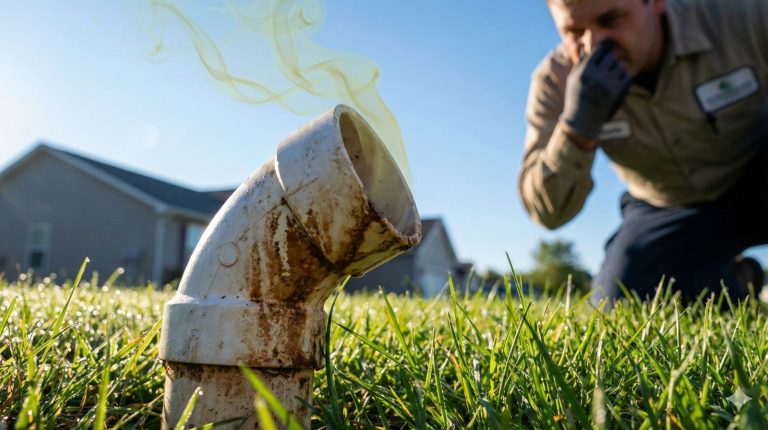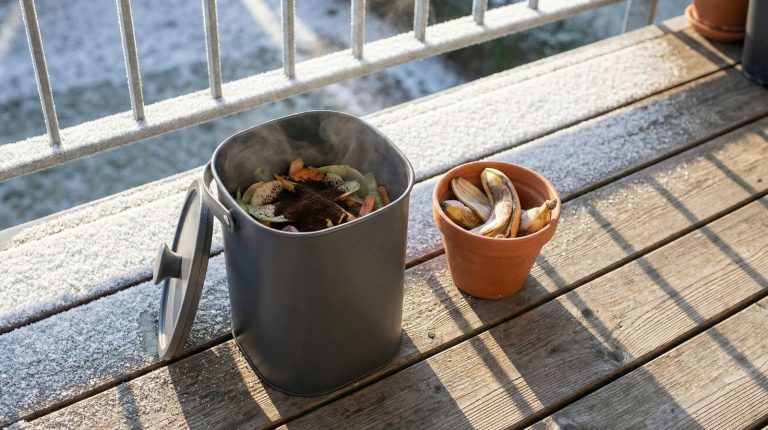Hey there, eco-warriors! Looking to join the movement towards sustainable living? Well, buckle up because we’ve got a treat for you! In this guide, we’re going to spill the beans on the 7 best eco-friendly practices for a greener, more sustainable lifestyle.
Imagine these practices as your trusty sidekicks on a quest to save Mother Earth, like a superhero team fighting for a better future. From sustainable shopping to conserving water, we’ve got it all covered.
So, whether you’re a seasoned pro or just starting your journey, get ready to embrace these practices and become part of a community that’s all about belonging and making a positive impact.
Let’s dive in and make a difference together!
Reduce Waste
To begin our discussion on reducing waste, let’s focus on the importance of opting for secondhand items instead of buying new. By choosing secondhand, we not only reduce waste but also give new life to items that would otherwise end up in landfills. Consider buying pre-loved clothes, furniture, electronics, and more. Not only can you find unique and affordable pieces, but you also contribute to a more sustainable future.
Another way to reduce waste is by investing in a reusable water bottle. By using a reusable bottle, you can avoid single-use plastic bottles, which are a major source of plastic waste.
Small actions, like these, can make a big difference in minimizing our environmental impact and creating a more sustainable world.
Conserve Energy
Let’s start by adopting eco-friendly practices that help us conserve energy and reduce our environmental impact. One way to do this is by using LED, CFL, or halogen bulbs, which consume less electricity compared to traditional incandescent bulbs.
Another simple yet effective way is to adjust our thermostat by 7 to 10 degrees for eight hours each day, which can significantly reduce our energy bills. Unplugging devices when not in use also helps save on standby power consumption.
Instead of using a dryer, using a drying rack can save both money and energy. Additionally, switching to a green energy plan or adding offsets can further reduce our carbon emissions.
Choose Renewable Resources
We can actively support sustainable living by embracing renewable resources. By choosing renewable resources, we can reduce our carbon footprint and contribute to a more eco-friendly future.
Here are five ways to incorporate renewable resources into our daily lives:
- Use solar power: Install solar panels on our rooftops to generate clean and renewable electricity.
- Opt for wind energy: Support wind energy projects by choosing a green energy plan for our homes.
- Invest in hydroelectric power: Install a small hydroelectric system to generate power from flowing water.
- Embrace geothermal energy: Utilize the heat from the Earth’s core for heating and cooling purposes.
- Consider biomass energy: Use organic materials or waste to produce heat, electricity, or fuel.
Support Local and Sustainable Agriculture
Supporting local and sustainable agriculture allows us to make a positive impact on our environment and communities.
By buying locally produced food, we can reduce greenhouse gas emissions from transportation and support small businesses and farms in our area.
Choosing organic and sustainable farming practices helps to protect farm workers, vulnerable communities, and wildlife, while also preserving habitats and biodiversity.
It’s important to be mindful of the impact our food choices have on the environment and to prioritize purchasing goods from wildlife-friendly farming methods. In doing so, we can reduce pesticide use and contamination, supporting sustainable agriculture.
Let’s actively engage with local officials and advocate for policies that promote and prioritize sustainable agriculture in the United States.
Practice Water Conservation
When it comes to water conservation, there are several simple actions we can take.
Installing efficient showerheads and faucets can help reduce water usage while still maintaining a satisfying water flow.
Implementing rainwater harvesting systems allows us to collect and reuse rainwater for tasks like watering plants or cleaning, reducing our reliance on freshwater sources.
Additionally, fixing leaky pipes is crucial in preventing water wastage and ensuring efficient use of this precious resource.
Efficient Showerheads and Faucets
To practice water conservation, one of the best eco-friendly practices is using efficient showerheads and faucets. By incorporating these water-saving fixtures into our homes, we can significantly reduce our water usage and contribute to the preservation of this precious resource. Here are five reasons why efficient showerheads and faucets are essential for water conservation:
- Reduced water consumption: Efficient showerheads and faucets are designed to use less water without compromising on performance, allowing us to enjoy our showers and use water responsibly.
- Lower energy consumption: By reducing the amount of hot water used, efficient showerheads and faucets also help lower energy consumption, resulting in cost savings and a reduced carbon footprint.
- Preservation of water resources: Using less water means less strain on our water sources, ensuring their sustainability for future generations.
- Financial savings: By reducing water usage, we can also save money on our water bills.
- Contribution to environmental sustainability: Conserving water through efficient showerheads and faucets is a simple yet impactful way to contribute to the overall goal of environmental sustainability.
Rainwater Harvesting Systems
Implementing a rainwater harvesting system allows us to practice water conservation effectively. Rainwater harvesting systems collect and store rainwater for later use, reducing our reliance on municipal water supplies. By capturing rainwater, we can reduce our overall water use and contribute to a more environmentally friendly lifestyle.
Rainwater harvesting systems are a simple and efficient way to conserve water. They can be installed in both residential and commercial properties and can be used for a variety of purposes, such as watering plants, washing cars, and flushing toilets. By utilizing rainwater for these everyday tasks, we can significantly reduce our water consumption and help protect our precious water resources.
Not only do rainwater harvesting systems conserve water, but they also have other environmental benefits. By capturing rainwater, we can prevent runoff and erosion, which can help protect our soil and water quality. Additionally, rainwater harvesting systems help reduce the demand for energy-intensive water treatment and distribution processes, further reducing our carbon footprint.
Fixing Leaky Pipes
One effective way to practice water conservation is by fixing any leaky pipes in our homes or buildings. Not only does this help reduce water waste, but it also contributes to sustainable living by reducing carbon emissions, plastic consumption, and energy consumption.
Here are some actions you can take to fix leaky pipes and promote water conservation:
- Regularly inspect your pipes for leaks and drips.
- Use pipe sealants or tape to fix minor leaks.
- Replace worn-out washers, gaskets, or O-rings to prevent leaks.
- Consider installing water-efficient fixtures and appliances to further reduce water usage.
- Educate yourself and your family on water-saving habits, such as turning off faucets tightly and fixing leaks promptly.
Promote Green Transportation
Let’s talk about how we can promote green transportation in our daily lives.
One effective way is through carpooling and ridesharing, which not only reduces our carbon footprint but also helps alleviate traffic congestion.
Additionally, utilizing public transportation benefits both the environment and our wallets by reducing air pollution and saving on fuel costs.
Carpooling and Ridesharing
Our group strongly believes that carpooling and ridesharing are essential practices for promoting green transportation. By embracing these practices, individuals can contribute to reducing carbon emissions and traffic congestion, while also experiencing numerous other benefits.
Here are five reasons why carpooling and ridesharing are beneficial for the environment and for individuals:
- Minimize carbon emissions and traffic congestion.
- Lower your carbon footprint and support sustainable transportation solutions.
- Conserve energy and reduce fuel consumption.
- Save money by sharing the expenses of fuel and maintenance.
- Foster a sense of community and social interaction among participants.
By choosing carpooling or ridesharing over using private vehicles, we can make a significant positive impact on the environment, save money, and build connections within our communities.
Let’s join together and make a difference by embracing these eco-friendly transportation options.
Public Transportation Benefits
Implementing a well-connected and efficient public transportation system is crucial for promoting green transportation and reducing reliance on private vehicles. Public transit not only saves money on gas and parking expenses but also helps reduce greenhouse gas emissions and air pollution.
By opting for public transportation instead of driving, individuals can actively contribute to reducing their carbon footprint. Many cities are adopting sustainable public transportation systems, such as electricity-powered trains and trams, to further minimize environmental impact.
Additionally, walking is a sustainable mode of transportation that not only saves money but also reduces air pollution and carbon emissions.
Educate and Advocate for Sustainability
While we strive for sustainability, it’s crucial that we educate and advocate for sustainable practices. By spreading awareness and actively promoting sustainable living, we can make a significant impact on the environment. Here are five ways we can educate and advocate for sustainability:
- Raise awareness about the harmful effects of plastic waste on our oceans and wildlife. Encourage others to reduce, reuse, and recycle plastic products.
- Educate others about the importance of reducing our carbon footprint by using renewable energy sources, conserving energy, and practicing eco-friendly transportation methods.
- Share information about local and global environmental issues, such as deforestation and water pollution, and encourage others to take action to address these problems.
- Support and participate in initiatives that promote sustainability, such as community clean-up projects and recycling programs.
- Use social media platforms and other communication channels to spread the message of sustainable living and inspire others to make positive changes.
Conclusion
In conclusion, by adopting these eco-friendly practices, we can pave the way for a greener and more sustainable future. Just like a blooming garden nourished by rain, our conscious choices can nurture the planet and help it thrive.
Let’s reduce waste, conserve energy, support local agriculture, and advocate for sustainability. Together, we can make a difference and create a world that flourishes with life and vitality.




